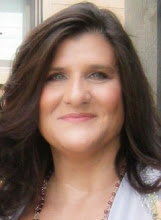Love stories are primarily about two characters who meet, are attracted, face a set of challenges, and overcome those challenges to live happily ever after. They have friends who are thrilled for them and foes who are not so thrilled.
Do you really need an evil lord or a psychotic killer to keep them apart? Not unless you are writing a paranormal or crime thriller.
Do you really need an antagonist at all? No, if you want to keep the tone light and conflict mild, friends and foes can cause enough mischief. But you do need antagonistic characters.
If someone in your lovers’ story world is dead set on keeping them apart and actively working against them, the potential for breakup conflict is higher. Your job as a romance writer is to instill doubt in the reader that your love interests will end up happily ever after. There are several types of antagonism to draw from. Let’s look at a few:
1. Disapproving parents or family members.
2. Disapproving best friend who rejects the new partner’s “otherness,” or resents the fact that his/her friend is now too busy to spend time with him/her, or the lover is changing to please the new partner so much the best friend no longer recognizes him/her.
3. The jealous ex-lover who fights to get the lover back or just makes sure no one else has him or her.
4. A powerful society figure who disapproves based on cultural, racial, etc. differences. It could be a religious leader, gang leader, or mafia boss. It could be a fraternity or sorority leader, or the head of a secret organization.
5. A boss who needs his employee to focus and the relationship is detrimental to his business plans (for a multitude of reasons).
6. A boss who needs the lover or love interest to move to a new city or country. The couple’s bonds are truly tested: who is willing to sacrifice how much to stay together?
7. An employee or coworker who wants the love interest and now has to admit how s/he feels.
8. A boss or friend encourages the love interest to do a favor that offends the love interest or the lover agrees to take on a job that is against the love interest’s morals or beliefs (political, religious, etc.).
9. Someone from a past, secret life who threatens to expose one of the lovers. Should the lover come clean or find a way to remove the threat?
10. Someone becomes a new responsibility for one of your lovers: a child, such as a niece or nephew, or a parent who is suddenly ill and has to move in. Perhaps the lover will have to relocate to take care of someone.
The important thing is to make the reader doubt an outcome that is inevitable: the happy ending.
For more on how to create your lovers, check out Story Building Blocks II: Crafting Believable Conflict, Story Building Blocks: Build A Cast Workbook, and Story Building Blocks Build A Plot Workbook: Romance which are available in both print and Kindle.
Read more about antagonists:
Choosing Your Antagonist
Antagonists, Villains, and Antiheroes
Where Do Antagonists Come From?
Antagonists Aren't Just Bad Guys
Diana Hurwitz is the author of Story Building Blocks: The Four Layers of Conflict, Story Building Blocks II: Crafting Believable Conflict, Story Building Blocks III: The Revision Layers, and the YA adventure series Mythikas Island. Her weekly blog, Game On: Crafting Believable Conflict explores how characters behave and misbehave. Visit DianaHurwitz.com for more information and free writing tools. You can follow her on Facebook and Twitter.
|




You present a great case for the antagonist/antagonistic character not needing to necessarily be the bad guy in the usual sense. In fact, it often makes a more interesting story if the antagonist is someone who doesn't normally play that role in the protagonist's life. There can also be more than one antagonist, which can make "happily ever after" even more in question. Excellent post, Diana, and thank you for the links. :-)
ReplyDeleteThe same antagonists can be employed in other genres as well.
ReplyDeleteThat's a great list. My protagonists are dealing with two of those in my current WIP
ReplyDeleteI've never tried writing romance, but the idea of putting obstacles in the way of true love by using antagonistic characters is intriguing. Must be my dark side at work. :D
ReplyDeleteThe first book in my Diana Racine Psychic Suspense series has a perfect example of your number one antagonist: a racist father of the main character who objects to his daughter's interest in the black cop. It is fairly settled by the end of the book, but now I'm working on book five, and he's back. Obviously, his objection didn't work.
ReplyDelete